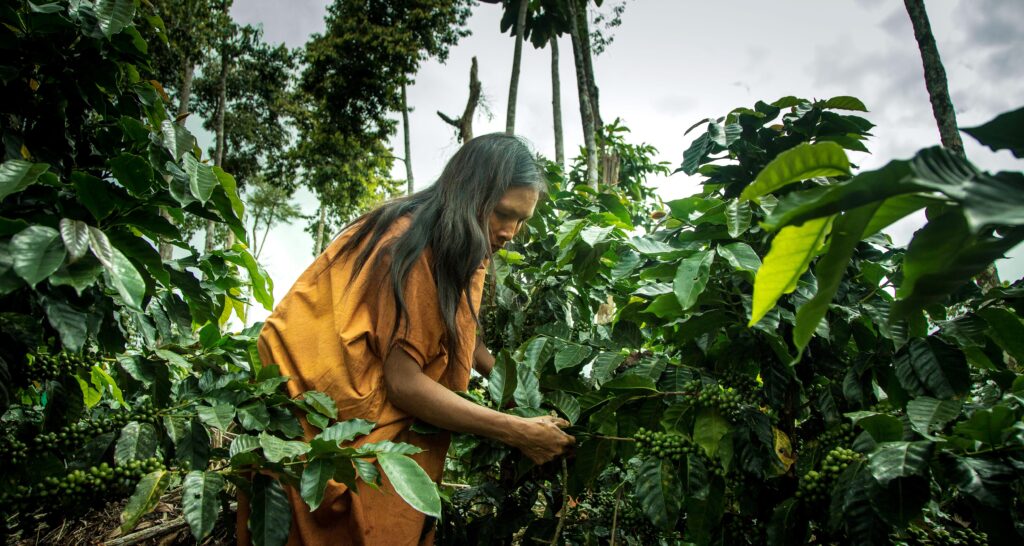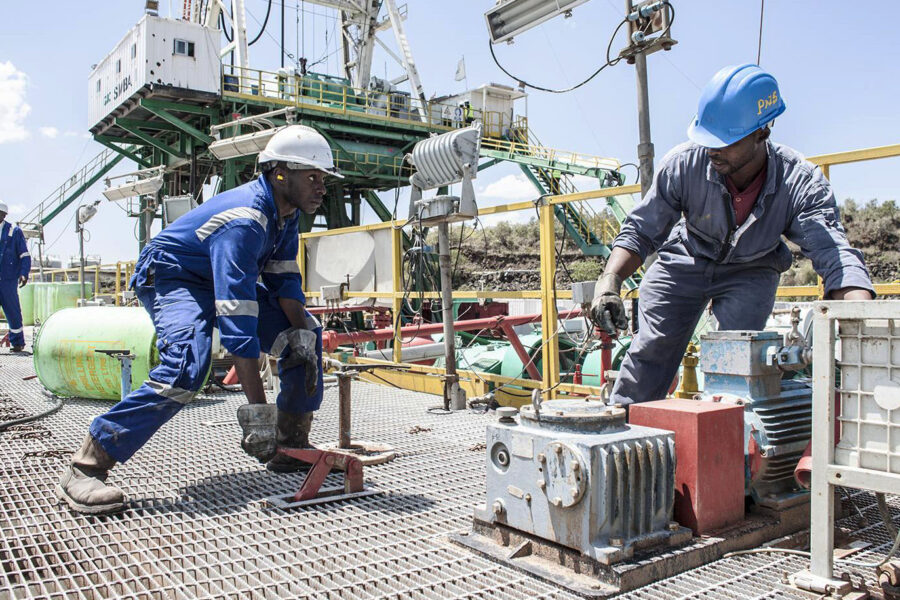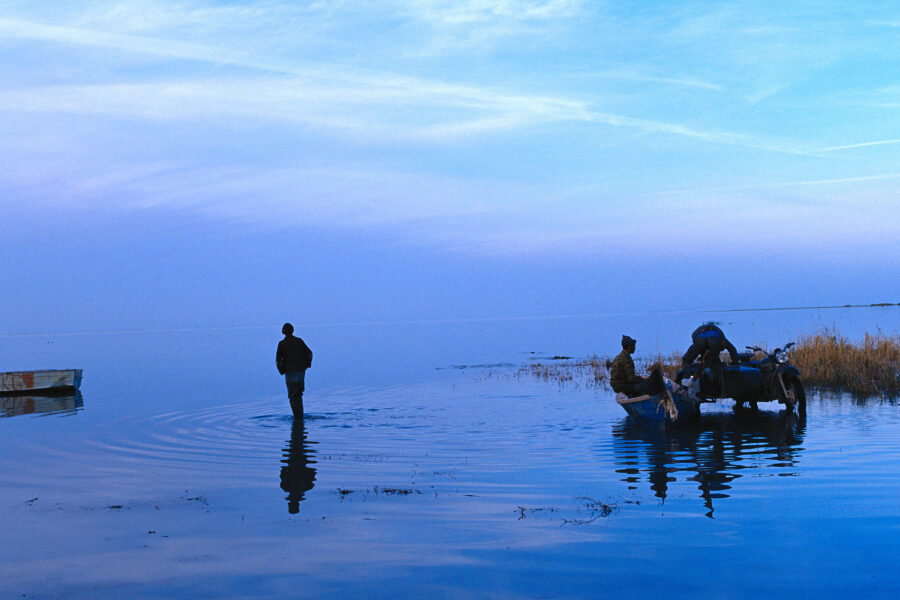Protecting planetary boundaries: aligning the SDGs to ensure humankind’s future
Climate is just one of nine identified ‘planetary boundaries’, beyond which humanity’s future comes under threat. We must ensure the SDGs succeed within these critical limits
Climate — Global

Humanity flourished and developed into today’s modern societies under the stable climate conditions of the last 12,000 years (the geologic period called the Holocene). During this period, Earth’s temperature varied by no more than 1°C around the long-term average. The rise of complex civilizations relied on the relative stability that emerged on Earth, generating all the biophysical functions, from ecosystems to the seasonality of water cycles, which we depend on. Our journey of civilization over the past 10,000 years took us from the Neolithic Revolution (also known as the first Agricultural Revolution) to the Industrial Revolution. That journey led to the increasingly excessive use of fossil fuels and natural resources like land and water.
This came at a price. Burning fossil fuels and converting almost 40% of the global land surface into cropland, meadows, and pastures has released large amounts of greenhouse gases (GHGs) into the atmosphere. Since the beginning of the Industrial Revolution, global levels of carbon dioxide (CO2) have risen by 50% and are now higher than at any time in the past 3.6 million years. The last time Earth experienced similar CO2 concentrations, temperatures were 2.7°C to 4°C hotter and the sea level could have been 20 meters higher than today. Methane, the second most important GHG, has tripled since 1800. Consequently, the year 2020 was among the three warmest on record. Global mean temperature was 1.2°C above pre-industrial levels, sea-level rise accelerated, and the Arctic minimum sea ice extent was the second lowest ever recorded.
The impacts of rapid population growth and explosive consumption extend far beyond climate change. We have lost nature at unprecedented speed through deforestation and industrial agriculture. Today, perhaps as little as 3% of the world’s land remains free from human degradation. Global species extinction is 10 to 100 times higher compared with the average over the last 10 million years. Up to one million species face extinction. The human dominance on Earth is extraordinary. The latest estimates show we have lost 68% of wildlife populations on Earth since 1970, in less than one human lifetime.
At tipping point
The exponential rise in human pressures on Earth, relating both to human induced climate change, over-exploiting of natural resources and interference with global cycles of water, nutrients, and chemicals, has led to the scientific conclusion that we have entered a new geological Epoch, the Anthropocene. Humans have become Earth’s dominant force of change. For the first time since the rise of civilizations, humans face the real risk of destabilizing the entire Earth system.
Some biophysical elements of the Earth system have the potential to change abruptly to a fundamentally new state at some level of global warming. These ‘tipping elements’ include the West Antarctic ice sheet, which may irreversibly start to collapse on millennial timescales at 1.5°C to 2°C of warming. The Amazon rainforest could switch into degraded savannahs at 3°C to 4°C of warming or more than 40% deforestation. Potentially, the Amazon’s tipping point could happen at 20% to 25% deforestation when global warming interacts with ecological degradation. The Amazon’s shift from a tropical rainforest into grasslands could happen within as little as 50 years. The latest assessment shows that the Brazilian Amazon, over the past 10 years, has already flipped from being a carbon sink to a carbon source, due to deforestation, forest fires, and droughts.
Tipping elements do not operate in isolation, but as sub-systems of the entire Earth system, interacting at global scale. There is now rising concern that one tipping point may lead to the shift in other tipping elements in a so-called ‘tipping cascade’. This would cause catastrophic, runaway climate change that would not stop even if we halted emissions overnight.
Safe boundaries?
These scientific insights show that we have entered the Anthropocene, and that pushing the Earth too hard can send systems beyond critical thresholds, triggering irreversible trajectories for the entire planet. Yet, we remain dependent on the continuation of the Holocene as the only state we know for sure can support our modern world. This leads inevitably to the necessity of defining a safe operating state that can continue to support humanity. Or, in short: what will it take to keep Earth in a Holocene-like interglacial state?
To address this, we must answer two questions. First, what are the biophysical systems and processes that regulate the state of the planet and the functioning of life-support systems in the biosphere? Second, for each of these systems and processes, can we scientifically define ‘safe boundaries’? By safe boundaries, we mean those beyond which we risk triggering non-linear dynamics, causing feedbacks that can lead to a planetary drift away from a manageable Holocene-like state. At the same time, they are boundaries within which we have a safe space delineated by scientifically defined targets (or boundaries) for a high likelihood of maintaining an Earth system that can support world development. This is the planetary boundaries framework.
Scientists have identified nine key planetary boundaries in the Earth system. These nine systems and processes contribute to regulate the state and functioning of the Earth system. They are:
- climate change
- biodiversity integrity (genetic and functional diversity of ecosystems and their functions)
- ocean acidification
- depletion of the ozone layer
- atmospheric aerosol pollution
- biogeochemical flows of nitrogen and phosphorus
- freshwater use
- land-system change
- release of novel chemicals
We have already pushed the planet outside the safe operating space for four of the nine boundaries. Among them are climate change, considered a ‘core boundary’, and biosphere integrity. Each has the potential to shift the Earth system into a new state if permanently and substantially exceeded.
Realigning the SDGs
Our global vision for sustainable development is expressed in the 2030 Agenda with its 17 Sustainable Development Goals (SDGs) that UN Member States adopted in 2015. These have created a framework for national action and global cooperation on sustainable development. The SDGs provide time-bound targets for prosperity, people, planet, peace, and partnership to guide national action and global cooperation.
Like the tipping points, they are also deeply interconnected. The achievement of one goal can influence the feasibility of achieving other goals. Transitioning towards sustainable and resilient societies strongly depends on maintaining a stable planet and responsible stewardship of natural resources. Sustainable land use, oceans, and food systems have been identified to be among the most important enabling conditions for achieving the SDGs.
This means that, with the SDGs, humanity has for the first time agreed on a global development path that integrates aspirational human development goals with a stable and resilient planet. In fact, the SDGs explicitly include four of the nine planetary boundaries: freshwater (SDG 6), climate (SDG 13), oceans (SDG 14) and biodiversity (SDG 15). What’s more, the Goals implicitly include all of the boundaries, through:
- SDG 2 on sustainable food systems (the land and nutrients boundaries)
- SDG 7 on clean energy (the aerosol boundary)
- SDG 12 on sustainable consumption and production (several boundaries)
- SDG 11 on sustainable cities (the novel chemicals and ozone boundaries)
The challenge is that the SDGs that cover planetary boundaries are not quantified. So there is an urgent need to integrate quantitative science targets for all planetary boundaries within the SDG framework. We must recognize the deep paradigm shift that is required: to truly meet the goal of healthy people on a healthy planet, we must achieve the SDGs within planetary boundaries.
We need bold transformations
Underlying almost all the transformative changes outlined by the SDGs is the decoupling of human well-being and socio-economic development from environmental degradation. This is the only way to meet the Paris target of reducing GHG emissions to zero by mid-century. However, climate and Earth system science increasingly show that the success or failure of the Paris Agreement does not depend solely on whether the world will achieve full decarbonization. It also depends on whether we can preserve and expand carbon sinks in natural ecosystems at the same time. Since the onset of industrialization, land and oceans removed and stored about 60% of all the CO2 emissions from burning fossil fuels and land use change. This is despite annual emissions increasing 16-fold between 1850 and 2019. If humanity loses this extraordinary climate protection provided by nature, we will have little chance of achieving the Paris climate goals, and therefore the SDGs.
Our future on Earth will depend on our ability to maintain a stable planet that continues to support life and human well-being. Rapid climate change multiplies the threat to biodiversity and human well-being. Only by achieving the Paris targets can we open the door to a sustainable future envisioned in the SDGs. This requires deep transformations in the way we produce and use energy, trade, consume, eat, and interact with nature.
Given the essential contribution of nature to limit global warming to levels compatible with a sustainable future for humanity, it will be critical to better integrate the United Nations Framework Convention on Climate Change (UNFCCC) and the Convention on Biological Diversity (CBD). Only healthy ecosystems will be able to continue to absorb large amounts of CO2. Only well-connected, heterogeneous and diverse ecosystems are resilient enough to do so under the levels of climate change that is already unavoidable.
We need to design integrated solution pathways within planetary boundaries that ensure any necessary social transformations catalyze change towards inclusiveness and sustainability. We need to act bold and fast as we move towards recovering from the COVID-19 pandemic, which has reversed most achievements made since the adoption of the SDGs in 2015. 2021 brings three major international meetings: COP15 of the CBD, COP26 of the UNFCCC, and the UN Food Systems Summit. Governments, meanwhile, are pledging huge amounts of fiscal spending for long-term economic recovery. We have both the opportunity and obligation this year to finally change the course of history towards prosperity and environmental sustainability for all. We must take it.





